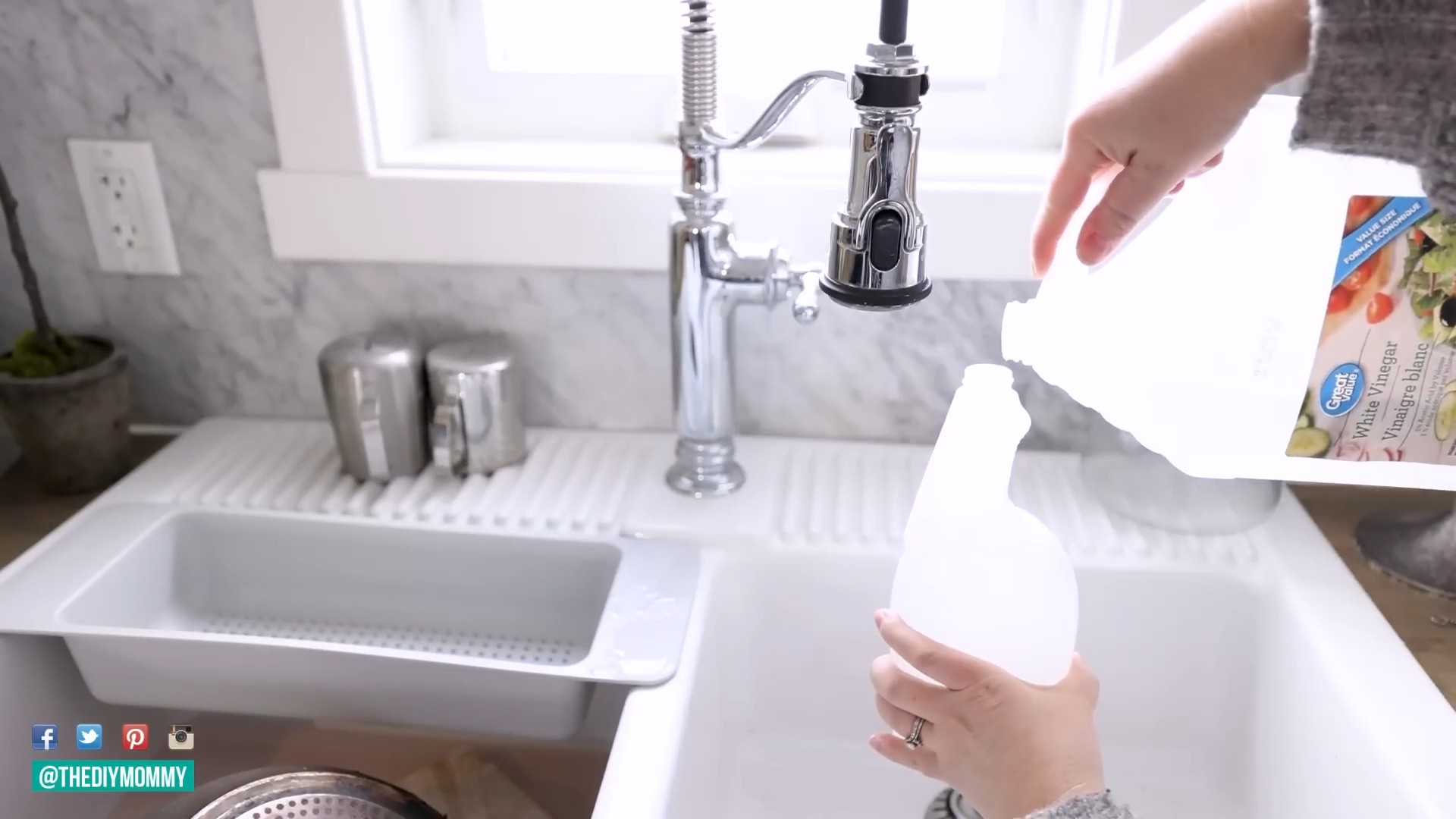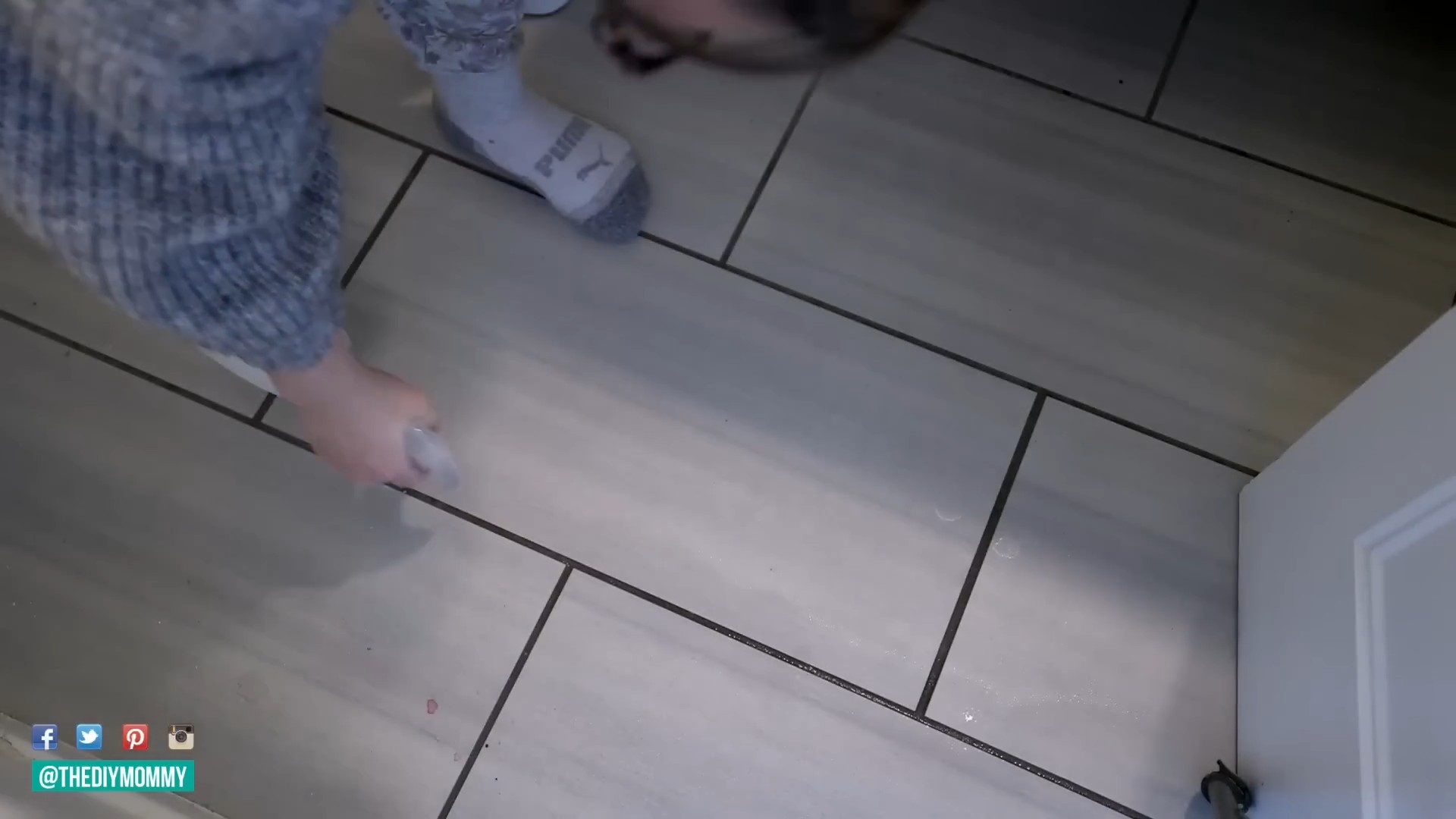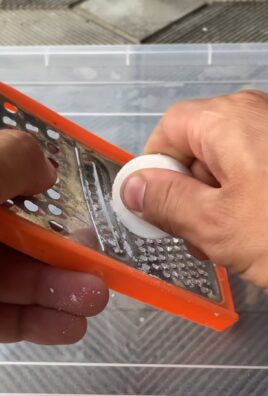Vinegar cleaning: it’s not just for salads anymore! Are you ready to unlock the surprisingly powerful cleaning potential hiding in your pantry? For generations, vinegar has been a staple in households, not just for its culinary uses, but also for its incredible versatility as a natural cleaner. Think back to your grandmother’s cleaning rituals – chances are, vinegar played a starring role.
But in today’s world of harsh chemicals and complicated cleaning products, the simple effectiveness of vinegar is often overlooked. That’s where this DIY guide comes in! I’m going to show you some amazing, unexpected ways to use vinegar cleaning to tackle grime, banish odors, and keep your home sparkling – all without breaking the bank or exposing your family to harmful toxins.
Why do you need these vinegar cleaning tricks? Because let’s face it, cleaning can be a chore. But it doesn’t have to be expensive, complicated, or bad for the environment. With these easy DIY hacks, you’ll discover how to harness the power of vinegar to simplify your cleaning routine, save money, and create a healthier home for yourself and your loved ones. Get ready to be amazed by the cleaning prowess of this humble kitchen staple!

Unlocking the Cleaning Power of Vinegar: Surprising DIY Hacks
Vinegar, that humble bottle sitting in your pantry, is more than just a salad dressing ingredient. It’s a powerhouse cleaner, a natural deodorizer, and an all-around amazing DIY tool. I’ve been using vinegar for years, and I’m constantly amazed by its versatility. Forget harsh chemicals and expensive cleaners – let’s dive into some surprising and effective ways to use vinegar around your home!
General Tips for Vinegar Cleaning
Before we jump into specific projects, here are a few general tips to keep in mind:
* Dilution is Key: Always dilute vinegar with water, especially when cleaning delicate surfaces. A 50/50 solution is usually a good starting point.
* Test First: Before applying vinegar to any surface, test it in an inconspicuous area to ensure it doesn’t cause discoloration or damage.
* White Vinegar is Your Best Friend: While other types of vinegar exist, distilled white vinegar is the most versatile and effective for cleaning.
* Baking Soda Boost: Vinegar and baking soda create a fizzing reaction that’s great for loosening grime. However, don’t mix them in a closed container, as the pressure can cause it to explode!
* Ventilation is Important: Vinegar has a strong smell, so make sure to open windows or use a fan when cleaning. The smell dissipates quickly, but it’s best to be comfortable.
Cleaning Your Microwave with Vinegar
Microwaves can get incredibly grimy, and scrubbing them can be a real pain. But with vinegar, it’s a breeze!
Materials You’ll Need:
* 1 cup of water
* 1/2 cup of white vinegar
* Microwave-safe bowl
* Clean cloth or sponge
Step-by-Step Instructions:
1. Combine Water and Vinegar: In the microwave-safe bowl, mix the water and vinegar.
2. Microwave the Solution: Place the bowl in the microwave and heat it on high for 5-10 minutes. The goal is to get the solution boiling and create steam.
3. Let it Sit: Leave the microwave door closed for another 5-10 minutes. The steam will loosen the grime and make it easy to wipe away.
4. Wipe Clean: Carefully remove the bowl (it will be hot!) and wipe down the inside of the microwave with a clean cloth or sponge. The grime should come off easily.
5. Stubborn Spots: For any stubborn spots, dip your cloth or sponge in the vinegar solution and scrub gently.
Deodorizing Your Dishwasher with Vinegar
Dishwashers can develop unpleasant odors over time. Vinegar can help eliminate those smells and keep your dishwasher running smoothly.
Materials You’ll Need:
* 1 cup of white vinegar
* Dishwasher-safe cup or bowl
Step-by-Step Instructions:
1. Prepare the Vinegar: Fill the dishwasher-safe cup or bowl with 1 cup of white vinegar.
2. Place in Dishwasher: Place the cup or bowl on the top rack of the empty dishwasher.
3. Run a Hot Cycle: Run the dishwasher on a hot cycle. The vinegar will help to deodorize and clean the interior.
4. Repeat Monthly: For best results, repeat this process once a month.
Cleaning Your Coffee Maker with Vinegar
Coffee makers can accumulate mineral deposits that affect the taste of your coffee. Vinegar is a natural descaler that can help keep your coffee maker in top condition.
Materials You’ll Need:
* White vinegar
* Water
* Coffee maker
* Coffee filter (optional)
Step-by-Step Instructions:
1. Prepare the Solution: Fill the coffee maker’s water reservoir with a 50/50 solution of white vinegar and water.
2. Run a Brewing Cycle: Run a full brewing cycle with the vinegar solution.
3. Rinse with Water: After the brewing cycle is complete, discard the vinegar solution and fill the reservoir with fresh water.
4. Run Several Rinse Cycles: Run several brewing cycles with fresh water to rinse away any remaining vinegar.
5. Clean the Carafe: Wash the coffee pot with soap and water.
6. Optional: Run one cycle with a coffee filter in place to catch any remaining sediment.
Removing Hard Water Stains with Vinegar
Hard water stains can be a real eyesore on faucets, showerheads, and glass shower doors. Vinegar is excellent at dissolving these mineral deposits.
Materials You’ll Need:
* White vinegar
* Spray bottle
* Clean cloth or sponge
* Plastic bag (for showerheads)
* Rubber band (for showerheads)
Step-by-Step Instructions:
1. Prepare the Vinegar: Pour white vinegar into a spray bottle.
2. Spray the Stains: Spray the vinegar directly onto the hard water stains.
3. Let it Sit: Allow the vinegar to sit for 15-30 minutes to dissolve the mineral deposits. For stubborn stains, you can let it sit for longer, even overnight.
4. Scrub Gently: Use a clean cloth or sponge to scrub the stains away.
5. Rinse with Water: Rinse the area thoroughly with water.
6. For Showerheads: Fill a plastic bag with vinegar and secure it around the showerhead with a rubber band, ensuring the showerhead is submerged in the vinegar. Let it soak for several hours or overnight. Remove the bag and rinse the showerhead thoroughly.
Cleaning Your Shower Curtain Liner with Vinegar
Shower curtain liners can get moldy and mildewy over time. Vinegar can help to clean and disinfect them.
Materials You’ll Need:
* White vinegar
* Washing machine
* Laundry detergent (optional)
Step-by-Step Instructions:
1. Remove the Liner: Take down your shower curtain liner.
2. Wash in Washing Machine: Place the liner in the washing machine along with a few towels (to help scrub it).
3. Add Vinegar: Add 1 cup of white vinegar to the washing machine’s detergent dispenser. You can also add a small amount of laundry detergent if desired.
4. Run a Gentle Cycle: Run the washing machine on a gentle cycle with cold water.
5. Hang to Dry: Hang the shower curtain liner to dry. Do not put it in the dryer, as this can damage it.
Cleaning Windows and Mirrors with Vinegar
Vinegar is a fantastic natural window and mirror cleaner, leaving them streak-free and sparkling.
Materials You’ll Need:
* White vinegar
* Water
* Spray bottle
* Microfiber cloth or newspaper
Step-by-Step Instructions:
1. Prepare the Solution: Mix equal parts white vinegar and water in a spray bottle.
2. Spray the Surface: Spray the vinegar solution onto the window or mirror.
3. Wipe Clean: Wipe the surface clean with a microfiber cloth or newspaper. Newspaper is surprisingly effective at leaving a streak-free finish.
4. Dry Thoroughly: Dry the surface with a clean, dry cloth.
Reviving Dull Laundry with Vinegar
Vinegar can help brighten colors and remove odors from your laundry.
Materials You’ll Need:
* White vinegar
* Washing machine
* Laundry detergent
Step-by-Step Instructions:
1. Add Vinegar to Wash: Add 1/2 cup of white vinegar to the washing machine’s fabric softener dispenser.
2. Wash as Usual: Wash your clothes as usual with laundry detergent.
3. Enjoy Brighter Colors: The vinegar will help to brighten colors and remove odors.
Cleaning Your Cutting Boards with Vinegar
Cutting boards can harbor bacteria, so it’s important to clean them thoroughly. Vinegar is a natural disinfectant that can help kill bacteria and remove odors.
Materials You’ll Need:
* White vinegar
* Clean cloth or sponge
Step-by-Step Instructions:
1. Wipe with Vinegar: Wipe the cutting board with white vinegar.
2. Let it Sit: Let the vinegar sit for a few minutes to disinfect the surface.
3. Rinse with Water: Rinse the cutting board thoroughly with water.
4. Dry Completely: Dry the cutting board completely before storing it.
Removing Stickers and Adhesive Residue with Vinegar
Stubborn stickers and adhesive residue can be a pain to remove. Vinegar can help to loosen the adhesive and make it easier to peel off.
Materials You’ll Need:
* White vinegar
* Clean cloth or cotton ball
Step-by-Step Instructions:
1. Soak the Area:

Conclusion
So, there you have it! These surprising vinegar cleaning tips are more than just a way to save money; they’re a gateway to a cleaner, healthier, and more sustainable home. We’ve explored how this humble pantry staple can tackle everything from stubborn hard water stains to lingering odors, all without the harsh chemicals found in many commercial cleaners. The versatility of vinegar is truly remarkable, and its effectiveness is undeniable.
Why is this DIY approach a must-try? Because it’s effective, economical, and eco-friendly. You’re reducing your reliance on potentially harmful chemicals, saving money on expensive cleaning products, and minimizing your environmental impact all at once. It’s a win-win-win! Plus, there’s a certain satisfaction that comes from knowing you’re cleaning your home with a natural, time-tested solution.
But the possibilities don’t stop here. Feel free to experiment with different infusions. Add citrus peels to your vinegar for a refreshing scent and extra cleaning power. Infuse it with herbs like lavender or rosemary for a calming aroma. You can even create your own custom cleaning solutions by combining vinegar with other natural ingredients like baking soda or essential oils. For example, a paste of baking soda and vinegar is excellent for scrubbing grout, while a spray of vinegar and water with a few drops of tea tree oil can help disinfect surfaces. Remember to always test your solutions on an inconspicuous area first, especially on delicate surfaces.
Consider using different types of vinegar for specific tasks. White distilled vinegar is the workhorse of the cleaning world, ideal for general cleaning and disinfecting. Apple cider vinegar, with its slightly milder acidity and pleasant scent, can be used for more delicate tasks like cleaning wood floors (diluted, of course!) or refreshing laundry. Cleaning vinegar, which has a higher acidity level than white distilled vinegar, is best for tackling tough stains and grime.
Don’t be afraid to adjust the dilution ratios to suit your needs. For light cleaning, a 1:1 ratio of vinegar and water may be sufficient. For tougher jobs, you may need to increase the concentration of vinegar. Always remember to label your homemade cleaning solutions clearly to avoid any confusion.
We’re confident that once you experience the power of vinegar cleaning, you’ll be hooked. It’s a simple, effective, and sustainable way to keep your home sparkling clean. So, ditch the harsh chemicals and embrace the natural cleaning power of vinegar.
Now, we want to hear from you! Try these surprising vinegar cleaning tips and share your experiences in the comments below. What are your favorite vinegar cleaning hacks? What challenges did you encounter, and how did you overcome them? Your feedback will not only help us improve this guide but also inspire other readers to embrace the power of natural cleaning. Let’s create a community of vinegar cleaning enthusiasts! We encourage you to share your before-and-after photos on social media using #VinegarCleaningHacks so we can see your amazing results. We can’t wait to see what you create!
FAQ
What kind of vinegar is best for cleaning?
White distilled vinegar is generally considered the best all-purpose vinegar for cleaning. It’s inexpensive, readily available, and has a high acidity level that makes it effective at disinfecting and removing grime. Cleaning vinegar, which has an even higher acidity level, is also a good option for tough cleaning jobs. Apple cider vinegar can be used for some cleaning tasks, but it’s less potent than white distilled vinegar and may leave a slight odor.
Is vinegar safe to use on all surfaces?
No, vinegar is not safe to use on all surfaces. Avoid using vinegar on natural stone surfaces like marble, granite, and limestone, as the acidity can etch and damage them. It’s also best to avoid using vinegar on waxed wood furniture, as it can strip the wax finish. Be cautious when using vinegar on electronics, as it can damage sensitive components. Always test vinegar on an inconspicuous area before using it on a larger surface.
Can I mix vinegar with bleach?
Never mix vinegar with bleach! This combination creates chlorine gas, which is highly toxic and can be fatal. Always use vinegar and bleach separately and rinse surfaces thoroughly between applications.
How do I get rid of the vinegar smell after cleaning?
The vinegar smell typically dissipates within a few hours. To speed up the process, you can open windows and doors to ventilate the area. You can also add a few drops of essential oils, such as lemon or lavender, to your vinegar cleaning solution to mask the odor. Another option is to place a bowl of baking soda in the room to absorb the smell.
Can vinegar kill mold?
Yes, vinegar can kill some types of mold. To kill mold with vinegar, spray undiluted white distilled vinegar onto the affected area and let it sit for an hour. Then, scrub the area with a brush and rinse with water. It’s important to note that vinegar may not be effective against all types of mold, and severe mold infestations may require professional remediation.
How do I clean my coffee maker with vinegar?
To clean your coffee maker with vinegar, fill the water reservoir with a solution of equal parts white distilled vinegar and water. Run the coffee maker through a full brewing cycle. Then, run two cycles with fresh water to rinse away any remaining vinegar. This will help remove mineral buildup and improve the taste of your coffee.
Can I use vinegar to clean my washing machine?
Yes, you can use vinegar to clean your washing machine. To clean your washing machine with vinegar, add 1 cup of white distilled vinegar to the detergent dispenser and run a hot water cycle. This will help remove detergent residue, mineral buildup, and odors. You can also clean the rubber gasket around the door with a vinegar solution to prevent mold growth.
How do I clean my microwave with vinegar?
To clean your microwave with vinegar, combine 1 cup of water and 1/4 cup of white distilled vinegar in a microwave-safe bowl. Microwave the mixture on high for 5 minutes. Let the steam sit in the microwave for a few minutes to loosen any grime. Then, carefully remove the bowl and wipe down the interior of the microwave with a clean cloth.
Can I use vinegar to clean my dishwasher?
Yes, you can use vinegar to clean your dishwasher. To clean your dishwasher with vinegar, place a dishwasher-safe cup filled with 1 cup of white distilled vinegar on the top rack of the dishwasher. Run the dishwasher on a hot water cycle. This will help remove food particles, mineral buildup, and odors.
How often should I clean with vinegar?
The frequency of cleaning with vinegar depends on your needs and preferences. For general cleaning, you can use vinegar once a week or as needed. For specific tasks, such as cleaning your coffee maker or washing machine, you can use vinegar once a month or every few months.
What are some other uses for vinegar in cleaning?
Vinegar can be used for a wide variety of cleaning tasks, including:
* Cleaning windows and mirrors
* Removing hard water stains from faucets and showerheads
* Deodorizing carpets and upholstery
* Cleaning cutting boards
* Removing stickers and adhesive residue
* Polishing chrome and stainless steel
* Cleaning toilet bowls
Is cleaning with vinegar environmentally friendly?
Yes, cleaning with vinegar is generally considered environmentally friendly. Vinegar is a natural, biodegradable substance that doesn’t contain harsh chemicals or toxins. By using vinegar for cleaning, you can reduce your reliance on commercial cleaning products that can pollute the environment.





Leave a Comment